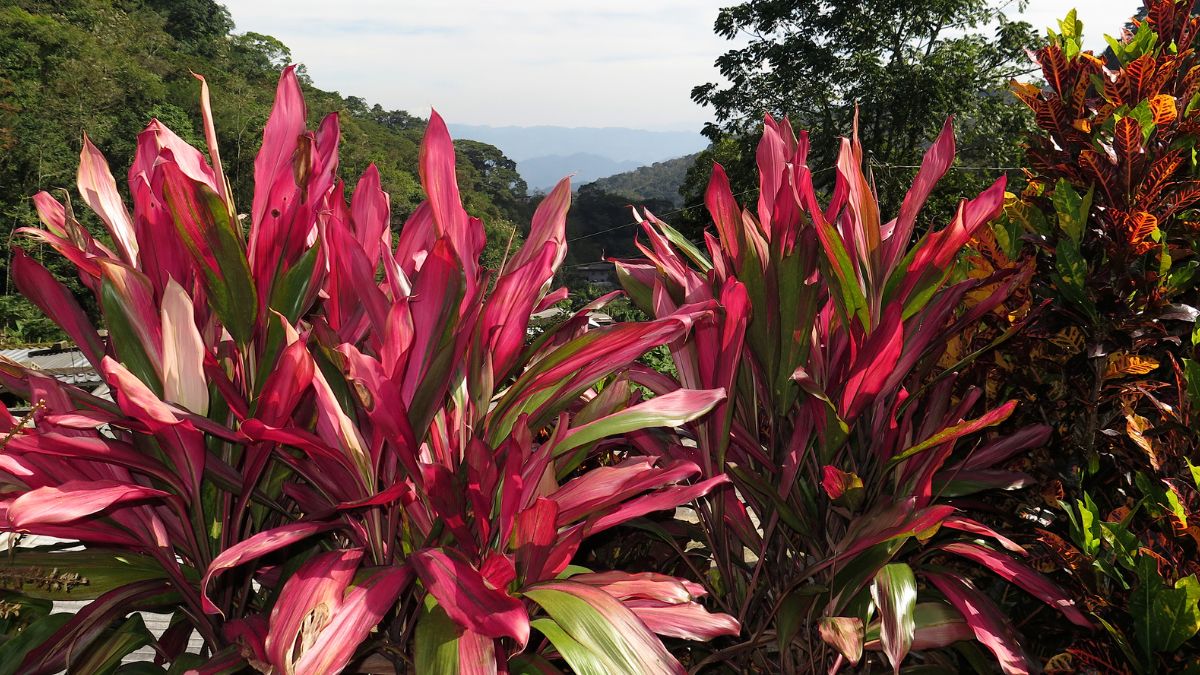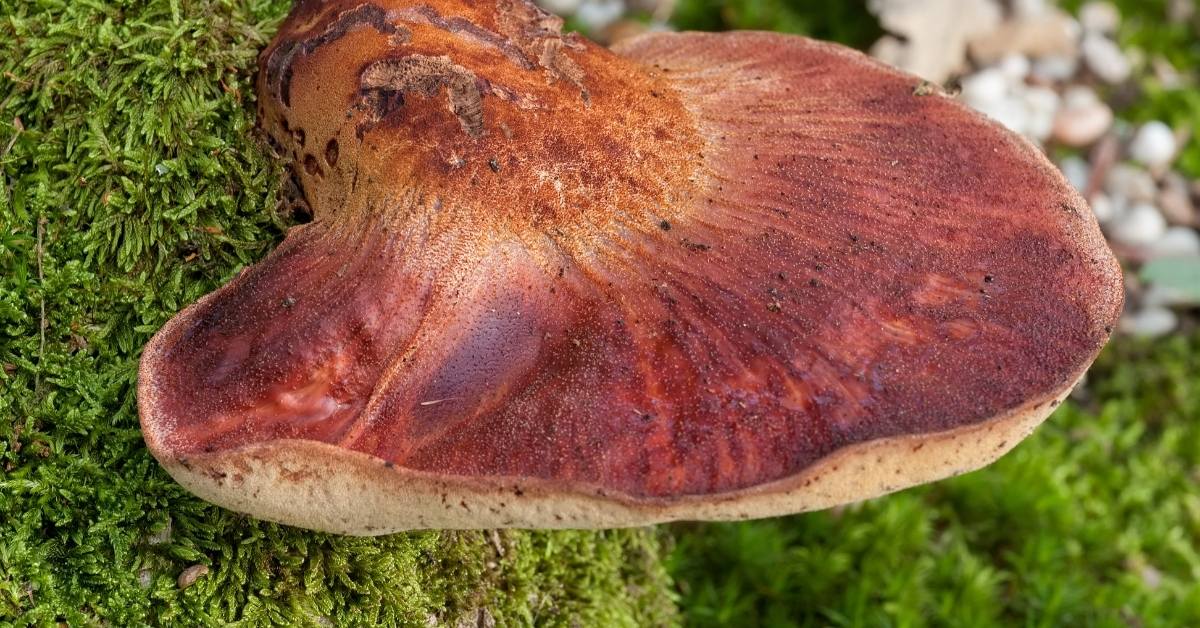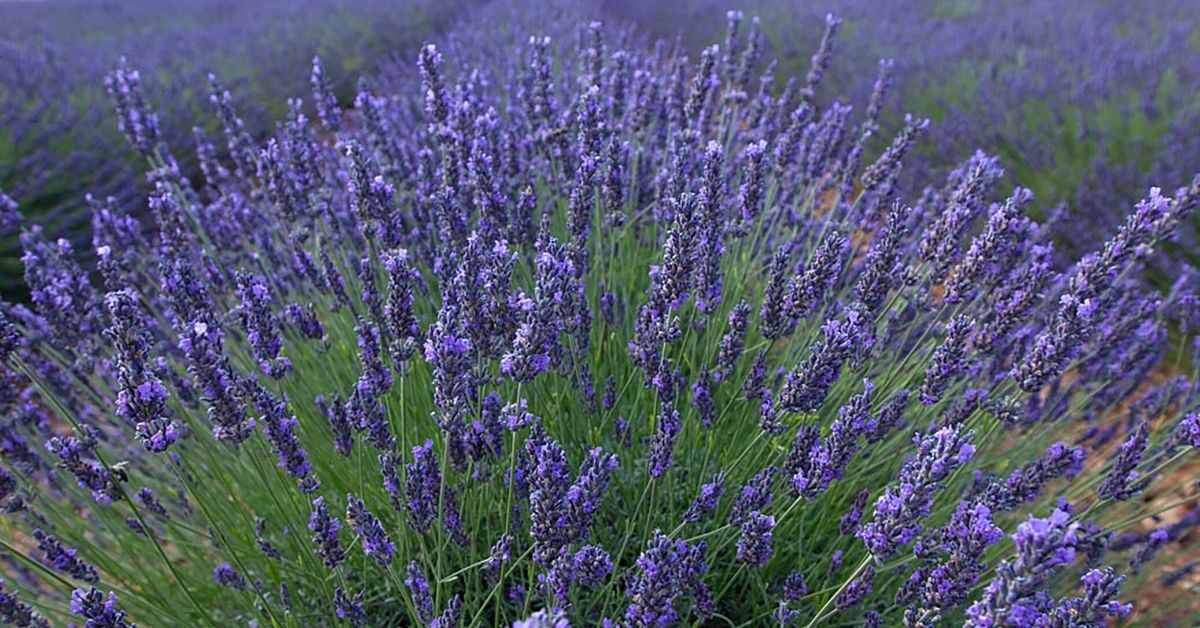The cordyline plant, with its vibrant and glossy leaves, is a standout in any garden or indoor space. It adds a tropical splash of color and creates an alluring focal point, making it a popular choice among plant enthusiasts and horticulturists alike.
Whether you are captivated by the lush, dark foliage of the Cordyline ‘Red Star’, the vibrant colors of ‘Red Sister’, or the electrifying ‘Electric Pink’, cultivating and caring for these versatile plants can be a rewarding experience. This comprehensive guide will walk you through everything you need to know about Cordyline, including its origins, diverse varieties, planting instructions, care tips, and even how to propagate this attractive plant. Let’s delve into the captivating world of Cordyline.
Overview of Cordyline
Cordyline, a genus with around 15 species belonging to the Asparagaceae family, is a group of evergreen shrubs and trees that are reminiscent of the Dracaena genus, with some species formerly classified as Dracaenas due to their similar appearance. The roots’ cut color helps distinguish between the two: while Dracaena roots have a yellow or orange hue, Cordyline roots are white.
Originating from regions spanning Asia, Australia, and New Zealand, Cordylines are tropical plants characterized by their short stem and long, lanceolate leaves. The coloration varies based on the species and variety, contributing significantly to their ornamental value. Indoor Cordylines often bloom in the summer, adding another level of visual interest, albeit infrequently.
Cordyline Varieties to Consider for Your Garden
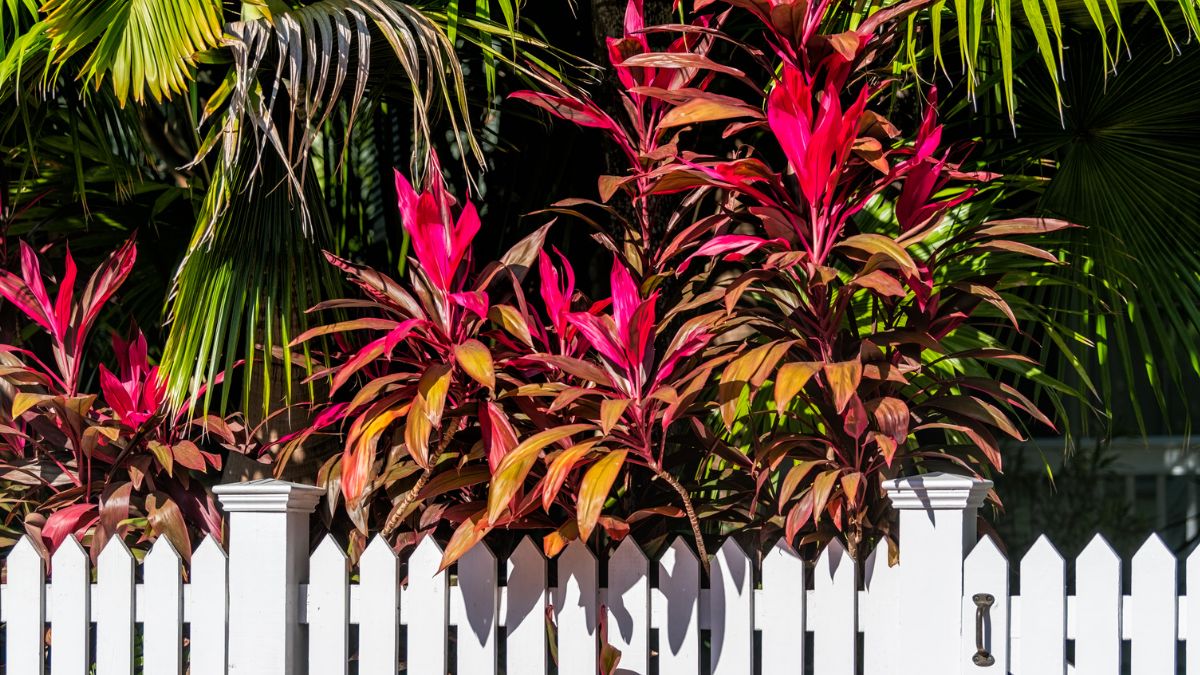
Cordylines are incredibly varied, boasting an array of colors and sizes that add uniqueness to any garden or indoor setup. Some of the most common and sought-after varieties include:
- Cordyline Australis (cabbage palm): Known as the Southern Cordyline, this variety is native to Australia and New Zealand. It is recognized by its lanceolate leaves, forming an apical rosette. The leaves can be as long as 90 cm (about 35 inches) and are bent downward. Two popular cultivars are ‘Red Star’ featuring red leaves, and ‘Solar Star’ boasting a central yellow vein.
- Cordyline Fruticosa (Ti plant): Formerly known as C. terminalis, this Southeast Asian native has a short stem and lanceolate leaves tinted cream, red, or purple. It is often used for composing compositions. Several forms and varieties derived from this species display a plethora of patterns, such as the ‘Tricolor’ with dark green leaves marked with red or purple stripes and ‘Red-edged’ with dark green leaves and intense red edges.
- Cordyline indivisa (mountain cabbage palm): Also of New Zealand origin, this species has lanceolate pointed leaves, frequently presenting a central red or yellow vein.
- Cordyline Red Sister: A popular cultivar of C. fruticosa, the ‘Red Sister‘ is characterized by its vibrant red and pink leaves. It’s a tropical favorite for its bold colors and broad leaves.
- Cordyline Electric Pink: Known for its brightly colored pink and purple stripes, the ‘Electric Pink’ is an eye-catching variety that can brighten up any landscape or interior.
- Cordyline fruticosa ‘Red Sister’: This plant has stunning, glossy, bright red leaves that add a pop of color to any garden.
- Cordyline australis: Also known as the New Zealand cabbage tree, this species can grow quite large and features narrow, sword-like leaves that can be green or have a reddish tint.
- Cordyline fruticosa ‘Kiwi’: This variety is known for its variegated leaves in shades of green, yellow, and pink, making it a vibrant choice for indoor or outdoor gardens.
- Cordyline ‘Can Can’: ‘Can Can’ is a compact variety with a burst of pink, cream, and green-striped leaves that stand out in any setting.
- Cordyline banksii (electric pink cordyline): This is a striking variety of Cordyline that has bright pink leaves. It is a popular houseplant but can also be grown outdoors in warm climates.
- Cordyline rubra (red cordyline): This variety has bright red leaves that are a striking addition to any garden. It is a hardy plant that can be grown outdoors in warm climates.
- Cordyline terminalis (Ti plant): This variety is similar to Cordyline fruticosa but has narrower leaves and a more compact growth habit. It is a popular houseplant but can also be grown outdoors in warm climates.
- Cordyline ‘Albertii’ (Albert’s cordyline): This variety has long, sword-shaped leaves that are dark green with a white margin. It is a slow-growing plant that is perfect for a small space.
- Cordyline ‘Pink Passion’ (pink passion cordyline): This variety has dark purple-pink leaves with yellow stripes. It is a striking variety that is perfect for a tropical garden.
- Cordyline ‘Red Sensation’ (red sensation cordyline): This variety has bright red leaves with a green margin. It is a popular houseplant but can also be grown outdoors in warm climates.
- Cordyline ‘Atropurpurea’ (burgundy cordyline): This variety has dark purple leaves that are a striking addition to any garden. It is a hardy plant that can be grown outdoors in warm climates.
- Cordyline ‘Coral Pink’ (coral pink cordyline): This variety has bright pink leaves with a green margin. It is a popular houseplant but can also be grown outdoors in warm climates.
- Cordyline ‘Harlequin’ (harlequin cordyline): This variety has leaves that are variegated with green, white, and pink. It is a striking variety that is perfect for a tropical garden.
- Cordyline ‘Maria’ (Maria cordyline): This variety has long, sword-shaped leaves that are dark green with a yellow margin. It is a slow-growing plant that is perfect for a small space.
- Cordyline ‘Rumba’ (rumba cordyline): This variety has dark red leaves with a yellow margin. It is a popular houseplant but can also be grown outdoors in warm climates.
- Cordyline ‘Albertii Variegata’ (Albert’s variegated cordyline): This variety has long, sword-shaped leaves that are dark green with a white margin and yellow stripes. It is a slow-growing plant that is perfect for a small space.
- Cordyline ‘Black Knight’ (black knight cordyline): This variety has dark purple leaves with a black margin. It is a hardy plant that can be grown outdoors in warm climates.
- Cordyline ‘Firebrand’ (firebrand cordyline): This variety has bright red leaves with a yellow margin. It is a popular houseplant but can also be grown outdoors in warm climates.
- Cordyline ‘Pink Sizzle’ (pink sizzle cordyline): This variety has dark purple-pink leaves with yellow stripes. It is a striking variety that is perfect for a tropical garden.
Cordylines can truly make a visual statement in your garden or home. Whether you are a novice gardener looking for an easy-to-care-for plant or an experienced horticulturist looking to add a touch of the exotic to your collection, Cordylines are a great choice. With their striking foliage, minimal care requirements, and versatility, they are an excellent addition to any plant collection.
Each of these varieties brings its unique touch, and knowing their specific needs can help you cultivate them successfully.
Planting Cordyline
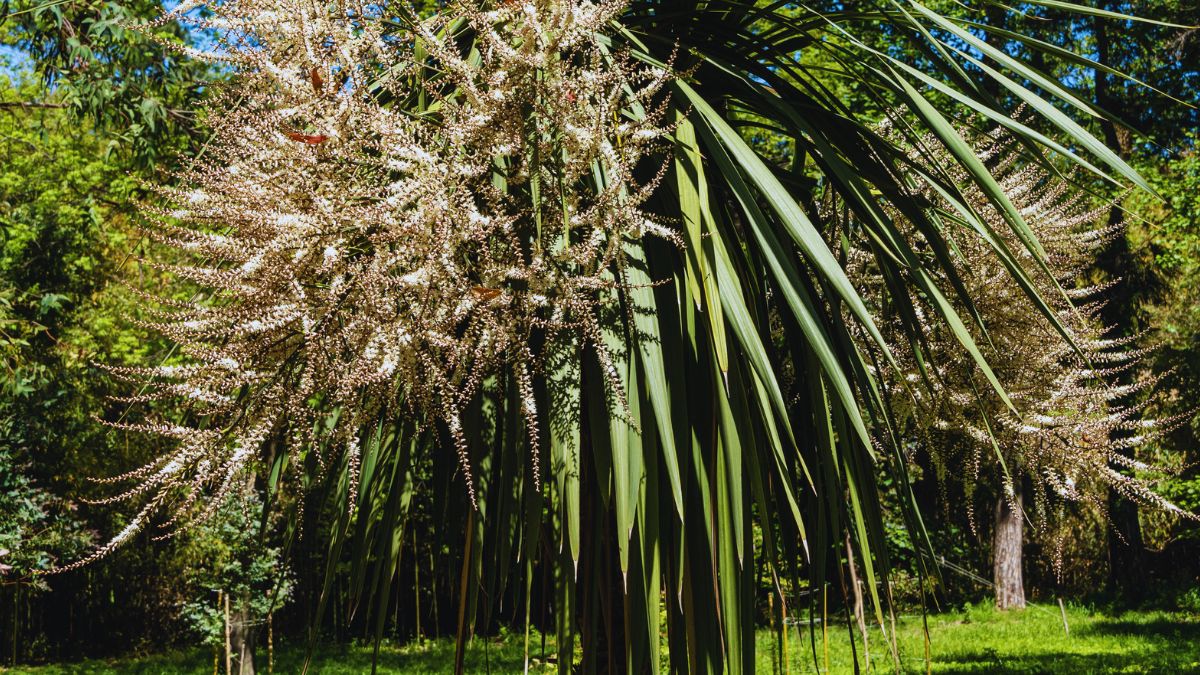
Cordyline is a tropical plant that can be grown indoors or outdoors in warm and sunny locations.
The planting process for Cordyline plants involves several steps, starting with selecting the right spot. These plants thrive in well-draining soil and require a location that gets plenty of indirect light, although they can tolerate partial shade.
You can improve the drainage of heavy clay soil by adding compost, sand or grit.
They prefer a slightly acidic soil pH between 6.0 and 6.5. For outdoor planting, spring is the best time once the threat of frost has passed.
You can also grow cordyline in pots with loam-based potting mix and ensure that the container has drainage holes.
Cordyline plants need a lot of water during the growing season but less in winter. You can apply a balanced fertilizer (such as 10-10-10 or 5-5-5) every month from spring to summer to promote healthy growth and colorful foliage.
Cordyline plants are relatively easy to care for, but they may need protection from frost, pests and diseases. You can prune cordyline to remove dead or damaged leaves and to shape the plant as desired.
The steps to plant Cordyline are pretty straightforward as follows:
- Prepare the Planting Area: Start by digging a hole twice the width and the same depth as the plant’s root ball. Make sure the area has good drainage to prevent water-logging.
- Prepare the Plant: If you’re planting a potted Cordyline, carefully remove it from its container, keeping the root ball intact.
- Plant the Cordyline: Place the plant into the hole so that the top of the root ball is level with the ground. Fill in around the plant with the removed soil and press down gently to remove any air pockets.
- Water the Plant: Water the Cordyline thoroughly after planting. This helps to settle the soil around the plant’s roots and improves the plant’s ability to establish itself in its new environment.
Cordyline Care: How to Grow and Maintain Your Cordyline Plant
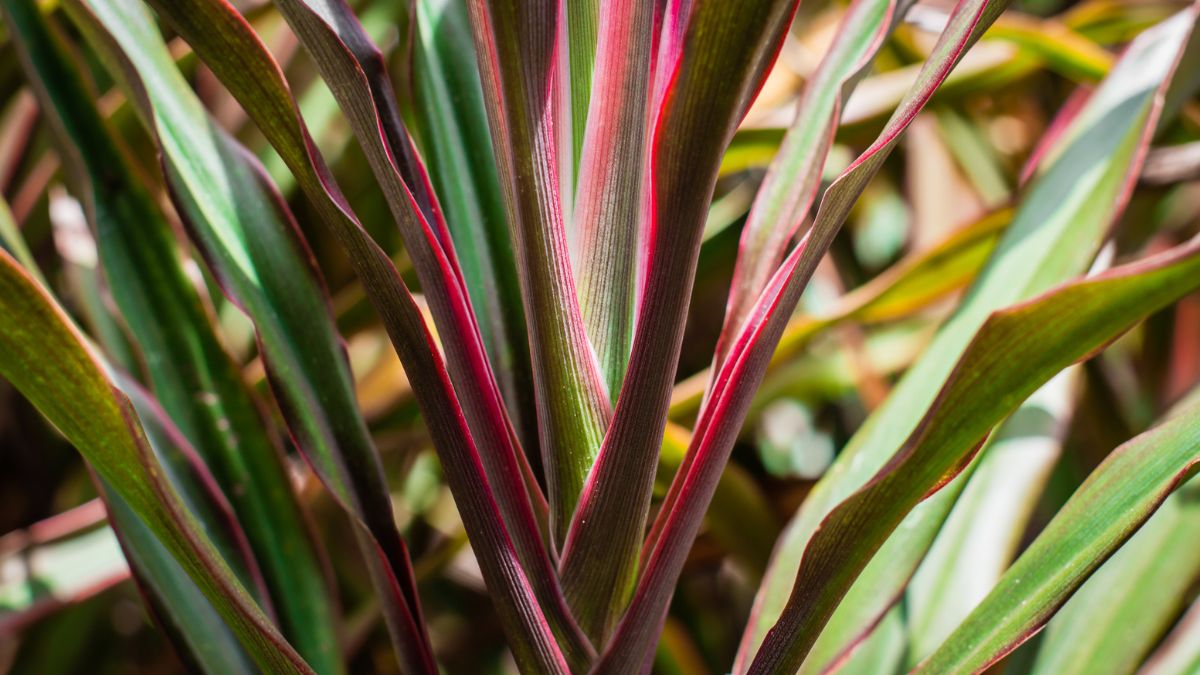
Caring for Cordylines is relatively straightforward, even for novice gardeners, as long as you keep in mind a few key points:
- Light Conditions: Variegated Cordyline varieties tend to have brighter and more colorful leaves when the plant is placed in a well-lit location, although not in direct sunlight. Green-leafed varieties can thrive even in partial shade.
- Watering: Cordylines do not require excessive watering. In summer, the soil should never be allowed to dry out or become overly wet completely. In winter, reduce watering to once every 15-20 days, ensuring that the soil in the pot does not dry out. In general, a moderate watering regime where the soil is kept slightly moist is beneficial.
- Humidity: These tropical plants appreciate a humid environment, and frequent spraying of the foliage is beneficial, especially during the hotter months.
- Temperature: Cordylines thrive at temperatures between 18-20°C (64-68°F) during the winter months. They can withstand short-term temperature drops to 10-12°C (50-54°F), especially if the humidity is not high. In summer, they can handle temperatures up to 24-26°C (75-79°F) without damage, provided the foliage is often sprayed with water. They should be kept away from drafts and sudden temperature changes.
- Fertilizing: Cordylines benefit from a balanced, water-soluble fertilizer applied periodically during the growing season (spring to summer). A typical rate might be 10 grams per bucket of water, though this should be adjusted based on specific product instructions.
- Soil Requirements: A well-draining, slightly acidic soil is best for Cordylines. You can use a universal soil mix for indoor plants, ensuring it has good drainage properties.
Pruning and Propagating Cordyline
Pruning Cordyline plants isn’t generally necessary unless you want to control their size or shape. If required, the best time to prune is in the spring. Cut back the plant to the desired height, and new growth will appear from the cut over time.
Instructions on How to Prune Cordyline
As was said before, cordyline does not demand a great deal of attention in the form of pruning. Simply take the time to remove any wasted flowers and dead foliage when you come across them on the plant.
In addition, it is a good idea to remove any leaves or stems that have received damage; however, if the plant is grown outside, you should wait until the worst of the winter weather has passed before attempting this.
If you see that your cordyline is becoming a touch unruly, you may trim it to promote its development and enhance the shape it now has. Wait until the middle of spring to do this with plants that will be kept outside. Remove any branches that are growing off the edge of the plant by cutting them back. Applying a fertilizer that is adjusted to the soil will encourage new growth, which will help the plant recuperate after it has been pruned.
Propagating Cordyline Plants
Propagation allows you to expand your Cordyline collection or share it with others. Here are some techniques to propagate Cordyline:
- By Cuttings: The simplest way to propagate Cordyline is through stem cuttings. Cut a stem from the parent plant, making sure to include at least one leaf node. Let the cutting dry for a day or two, then place it in a container with well-draining soil. Keep the soil lightly moist until the cutting develops roots; then, you can transplant it to a more permanent location.
- By Division: Division is another effective method, especially for mature Cordylines. During repotting, you can divide the root ball into multiple parts, each with at least one growth point. Plant each division in a separate pot with fresh potting mix.
- By Seeds: Although it’s less common, you can also propagate Cordylines from seeds. However, it’s a slower process and requires more patience and care.
How to propagate
As I mentioned before, propagating Cordylines is typically done through root division or cuttings. Here are the steps to propagate from cuttings:
- Prepare the Cutting: Take a stem cutting of about 7-8 cm long. Ensure that it has several leaf nodes along the length.
- Root the Cutting: Plant the cutting in a mixture of equal parts peat and sand. Keep it at a temperature of 20-24°C (68-75°F) and ensure adequate humidity by covering the cutting with a plastic film.
- Transplant: Once the cutting has rooted and new growth appears, it can be transplanted into a larger pot with a suitable potting mix.
Dealing with Pests and Diseases
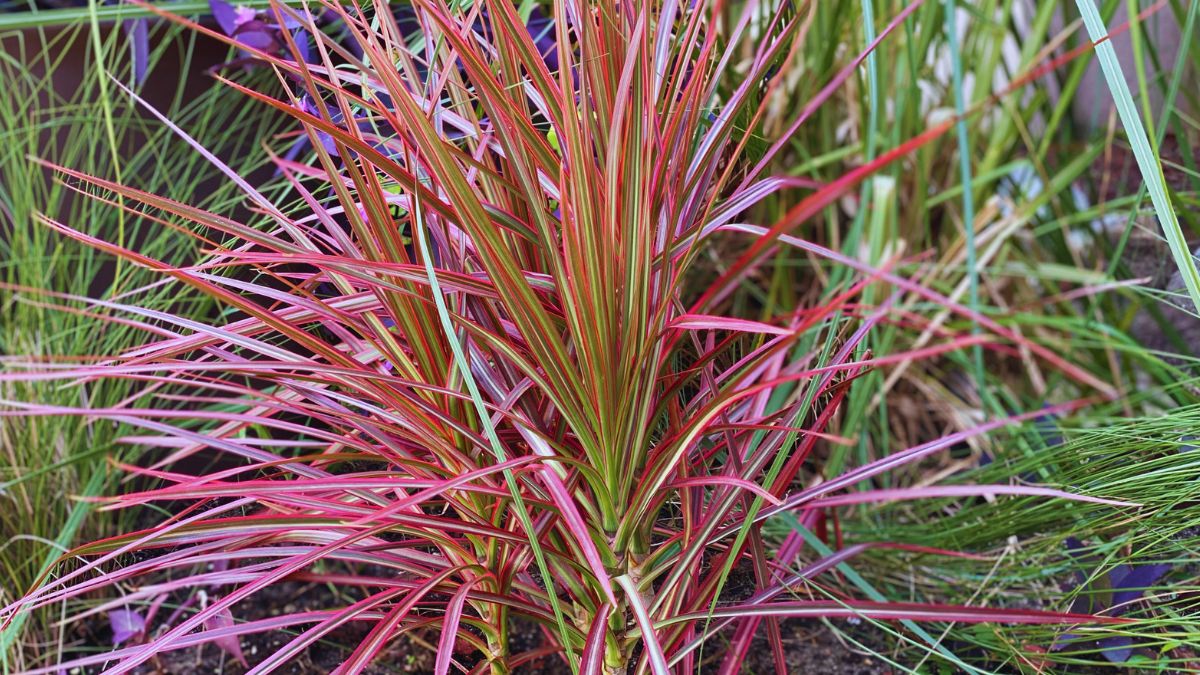
In general, Cordylines don’t face significant issues with diseases or pests, given the right growing conditions. However, root rot can occur if the plant is waterlogged. Prevent this by ensuring good soil drainage and correct watering practices.
As for pests, Cordylines can occasionally attract spider mites, mealybugs, or scales. These can usually be removed manually or treated with an appropriate insecticide. If the leaves begin to yellow or fall off, this could be a sign of too much water, not enough light, or a pest infestation.
To summarize, Cordylines are easy-to-grow and low-maintenance plants that add a touch of tropical beauty to any indoor or outdoor garden. Their wide variety of forms and colors make them versatile and visually stunning additions to your plant collection.
Repotting Cordyline Plants
Cordyline plants may need to be repotted every two to three years or whenever the plant becomes too large for its pot. Here’s how to do it:
- Choose the Right Time: The best time to repot a Cordyline is in the spring, just as the plant starts actively growing.
- Select a Suitable Pot: Choose a pot that is one or two sizes larger than the current one. Make sure the new pot has good drainage.
- Prepare the Plant: Carefully remove the Cordyline from its current pot. Loosen the root ball and trim off any excessively long or damaged roots.
- Prepare the Pot: Place a layer of drainage material, such as gravel or pot shards, at the bottom of the new pot. Then, add a layer of fresh potting soil.
- Transplant the Plant: Position the Cordyline in the new pot, ensuring that it’s at the same depth as it was in the old pot. Fill in around the plant with additional potting soil, leaving a little space at the top for watering.
- Aftercare: Water the plant thoroughly and place it in a location where it will get bright, indirect light. Avoid feeding the plant for about four to six weeks after repotting to allow it to settle into its new home.
Troubleshooting Common Cordyline Problems
Despite their easy care, Cordylines can sometimes encounter problems. Here are some common issues and how to handle them:
- Yellowing Leaves: If your Cordyline’s leaves start to turn yellow, it could be a sign of overwatering. Allow the soil to dry out slightly between watering, and ensure your plant has good drainage.
- Brown Leaf Tips: This could indicate a lack of humidity. Regular misting can help improve the humidity around your Cordyline.
- Fading Leaf Color: If your Cordyline’s leaves start to fade or lose their vibrant color, they might not be getting enough light. Move your plant to a brighter location, but be mindful of direct sunlight, which can scorch the leaves.
- Pests: Cordylines can occasionally be affected by pests like spider mites or scale. If you notice small, discolored spots on your plant or a sticky residue, it might be infested. Treat the plant with an insecticidal soap or a neem oil solution.
Conclusion
Cordylines are remarkably versatile and hardy plants that bring a dash of tropical charm to any space. With proper care and attention, these exotic beauties can thrive for many years, offering a visual feast with their vibrant and varied foliage. Whether you’re a beginner dipping your toes into the world of gardening or a seasoned horticulturist, cultivating Cordylines can be a rewarding experience. So, why not add a Cordyline or two to your garden or home? You might just fall in love with these tropical beauties!
What is the best time to repot a Cordyline plant?
The best time to repot a Cordyline plant is in the spring or early summer when the plant is actively growing. To repot, choose a pot that is only slightly larger than the current pot. Fill the new pot with a well-draining potting mix and carefully remove the plant from the old pot. Repot the plant in the new pot and water it thoroughly.
How do I propagate a Cordyline plant?
Cordyline plants can be propagated by division or by stem cuttings. To propagate by division, divide the plant in the spring or early summer. To propagate by stem cuttings, take a 4-6 inch cutting from a healthy plant in the spring or early summer. Dip the cutting in rooting hormone and plant it in a pot of well-draining potting mix. Keep the soil moist, and the cutting should root in a few weeks.
How do I overwinter a Cordyline plant?
If you live in a cold climate, you will need to overwinter your Cordyline plant indoors. Choose a bright, sunny spot in your home and water the plant regularly. Fertilize the plant every few months during the winter. In the spring, you can gradually move the plant outdoors.
